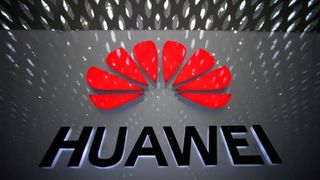Huawei unveils its first post-Arm board
The RISC-V development board appears to have all the capabilities of the Raspberry Pi

Huawei’s HiSilicon subsidiary has released its first RISC-V board for the developers of its HarmonyOS family of operating systems.
The release is significant as it is the result of the US trade blockade that delivered a dramatic blow to Chinese manufacturers such as Huawei. Thanks to the trade war between the countries, Huawei’s HiSilicon subsidiary lost access to its semiconductor manufacturing, which centered around Arm.
As it continues to wean away from its dependence on US-based tech, the RISC-V board marks another departure for Huawei, which is reportedly making great strides with its software replacement for Android.
- Take a look at these best laptops for business
- Here are the best Linux laptops for running Linux
- Also take a look at the best laptops for programming
The RISC-V open standard instruction set architecture (ISA) has experienced a kind of renaissance in recent years with multiple companies jumping on the bandwagon, including several like Huawei forced to look at alternatives to Arm.
Sign of things to come?
While the RISC-V board is described as a main controller chip, Huawei's documentation doesn't specify the intended purpose of the chip, according to Tom’s Hardware.
The RISC-V board is based on Huawei’s Hi3861 controller and sports a serial port controller as well as a USB-C port as well as GPIO (general-purpose) pins.
Scrolling through its specs, Tom’s Hardware believes that the board named HiSilicon Hi3861 development board appears to have Raspberry Pi-like capabilities, at the very least, and is probably designed for the Internet of Things (IoT) market.
Are you a pro? Subscribe to our newsletter
Sign up to the TechRadar Pro newsletter to get all the top news, opinion, features and guidance your business needs to succeed!
Traditionally, HiSilicon's development efforts were aimed at high-margin smartphones, tablets, PCs, and embedded systems, and Tom’s Hardware reckons that the new RISC-V chip could perhaps be a springboard to other, more powerful devices.
- Subscribe to Linux Format magazine for more Linux and open source goodness
Via Tom’s Hardware
With almost two decades of writing and reporting on Linux, Mayank Sharma would like everyone to think he’s TechRadar Pro’s expert on the topic. Of course, he’s just as interested in other computing topics, particularly cybersecurity, cloud, containers, and coding.
